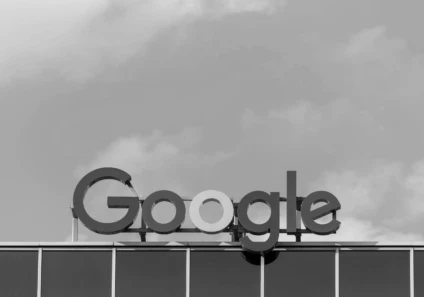
An ill-advised marketing trend adopted by many large brands in recent years is the reliance on just advising customers to “search [for] X Y Z” as a means of directing users to the main corporate website. The implication is that the official site will be the top-ranked result for the search-term in question (i.e. a successful implementation of search-engine optimisation, or SEO), but this is frequently not the case. The ranking of a URL in a page of search-engine result is dependent on a number of factors, including the search-engine used (all of which have proprietary algorithms for prioritising results), the location from which the search is carried out, the presence of sponsored ads (where third parties may have paid the search engine to be returned in response to a specific query) and potentially even the user’s own search and browsing history (particularly for engines such as Google, where the user may be logged into their own account). This is, of course, not even factoring in instances where search terms may be misspelled or mistyped.
The fact that non-legitimate sites and other third parties can configure their websites (and adopt other SEO measures) to boost their own search-engine ranking and misdirect web users is essentially one of the primary reasons why online brand protection per se is important. At the very least, organisations should always explicitly give their official domain name (i.e. web address) in all advertising initiatives, so that customers know which link to click on within the search results (and, arguably, if this is done, there’s no need to specify an appropriate search term to be used at all).
In this study, we look at the success rate of particular search queries in returning the desired website as the top-placed search-engine result.
In the first part of the analysis, we consider the website-access details given in a range of award-winning and ‘best-in-class’ advertisements from UK commercial radio over approximately the last four years[1]. We choose radio as the medium to consider since the only information given is that contained in the audio (with no accompanying on-screen cues to provide additional website information), and select a UK focus to reflect the fact that our research is carried out via a UK IP address. Of the 151 advertisements analysed, only 56 (37%) give any guidance at all on how to access the corresponding website of the organisation in question, despite several other encouraging users to ‘visit online’, ‘search online’ or ‘download the app’. This clearly presents potential for the creation of deliberately misleading sites by bad actors. Of the 56, 47 (84%) do (reassuringly) give the domain name of the official website but, even then, there is potential for misdirection for misheard, misspelled, or mistyped URLs. For example, the domains train-line.com, netflicks.co.uk and morissons.com (all plausible erroneous replacements for the official sites trainline.com, netflix.co.uk and morrisons.com for a user based only on audio guidance) are currently registered and resolve to live sites. One offers the domain name for sale, and the other two feature pay-per-click links, which not only provide potential for customer misdirection in their current form, but also present the risk for the creation of actively fraudulent sites in the future.
An analysis of the effectiveness of the ‘search’ instructions for the remainder of the advertisements is shown in Table 1, which gives the (highest) position within the search results of the official website(s) in question, in response to the query-term cited, for the five most popular search engines for western users[2],[3]. The analysis encompasses only the first page of results (according to default settings) returned by each search engine, and gives the position of the relevant result within both the organic (i.e. the algorithm-based) listings (‘org’) and the overall position (‘all’) on the page (given that sponsored results in some cases are displayed above the organic listings).
|
Search engine → |
|
Bing |
Yahoo |
DuckDuckGo |
Ask |
||||||
|
Search query |
Official website domain |
org |
all |
org |
all |
org |
all |
org |
all |
org |
all |
|
cure hearts |
bhf.org.uk |
1 |
1 |
1 |
1 |
1 |
4 |
1 |
3 |
– |
– |
|
smarty mobile |
smarty.co.uk |
1 |
1 |
1 |
4 |
1 |
4 |
1 |
2 |
– |
– |
|
highways england |
nationalhighways.co.uk |
1 |
1 |
1 |
1 |
1 |
3 |
1 |
1 |
– |
– |
|
gov.uk |
2 |
2 |
2 |
2 |
2 |
4 |
2 |
2 |
– |
– |
|
|
highwaysengand.co.uk |
3 |
3 |
3 |
3 |
3 |
5 |
3 |
3 |
– |
– |
|
|
trafficengland.com |
4 |
4 |
– |
– |
– |
– |
8 |
8 |
– |
– |
|
|
nursing careers |
nhs.uk |
1 |
1 |
1 |
2 |
1 |
5 |
1 |
3 |
– |
– |
|
british gas |
britishgas.co.uk |
1 |
1 |
1 |
1 |
1 |
1 |
1 |
1 |
– |
– |
|
360 ict |
360ict-itsupport.co.uk |
1 |
1 |
1 |
1 |
1 |
1 |
1 |
1 |
– |
– |
|
hsbc uk |
hsbc.co.uk |
1 |
1 |
1 |
1 |
1 |
1 |
1 |
1 |
– |
– |
|
ofcom stay connected |
ofcom.org.uk |
1 |
1 |
1 |
1 |
1 |
1 |
1 |
2 |
– |
– |
‘–’ denotes that the official site does not appear anywhere within the first page of results
Table 1: Search-engine position of the official website(s) of the advertised organisations, in response to the search-terms given, for the five most popular western search engines (all .com)
There are a number of points to take from this analysis:
- In general, the suggested search queries are effective at returning the desired website at the top of the organic results, although the performance does vary by search engine (with Ask.com generally performing poorly).
- However, in many cases, third-party sponsored links are displayed above the organic results, so the desired website is not always returned at the top of the page. This could provide a source of confusion for users (particularly when there is little visible distinction between the sponsored and organic listings) (Figure 1).
- Additionally, in some cases, it is unclear which is the ‘intended’ website for customers – this is particularly true for Highways England, where up to four potentially-relevant websites are returned within the results. Also, for some less well-known brands, it may not be clear to users which is the intended website (e.g. the second result returned for ‘360 ict’ on some search engines is for ict360.com, which is a separate organisation). This may be problematic where the official website domain has not been stated in the advertisement in question.

Figure 1: Example of a page of search results for ‘smarty mobile’ on Yahoo.com, where the organic results appear underneath sponsored ads for third-party companies
Any such problems will likely be accentuated in cases where the user is (for example) not searching from a UK IP address. This may be the case for an individual streaming the radio transmission via the Internet. When searching from the US[4], for example, the top results for ‘nursing careers’ and ‘360 ict’ are registerednursing.org and ict360.com respectively – i.e. different organisations altogether.
A further illustration of the dangers of relying just on SEO to direct traffic to official websites can be obtained by turning the problem around, and looking at the queries which users are actually utilising. For the top five most popular websites globally (for example), several of the top five queries driving organic search traffic to the sites in each case do not feature the brand name[5], namely:
- for youtube.com:
- ‘yt’ (position 2)
- ‘y’ (position 5)
- for facebook.com:
- ‘fb’ (position 2)
- ‘face’ (position 5)
- for instagram.com:
- ‘ig’ (position 2)
- ‘insta’ (position 4)
- ‘ins’ (position 5)
- for twitter.com:
- ‘tw’ (position 4)
Whilst in many cases (based on UK searches on Google.com on 04-Jan-2024) these searches do return the respective site as the top result, there is no guarantee that this will always be the case. Furthermore, the top result for ‘ig’ is actually the website for trading platform ig.com, not Instagram.com. Additionally, although Google correctly ‘guesses’ that searches for ‘face’ and ‘insta’ should include results for ‘facebook’ and ‘instagram’ (and accordingly returns the respective sites as the top results), this is not the case if we specify that the search engine returns only the results for the exact query as submitted. In this case, the top results are https://en.wikipedia.org/wiki/Face and https://www.instagram.com/insta/ (the specific account page for the user @insta), respectively).
There are a number of take-aways for brand owners. Firstly, it is certainly worth ensuring that official websites are effectively search-engine optimised, and are highly ranked in search-engine results in response to relevant and popular query terms. Bidding on appropriate keywords so as to be featured in sponsored advertisements can also be part of this process. Secondly, it is strongly recommended to always reference the domain name of the official website in advertising collateral, so that users know where to click even if they do run a search rather than browsing directly. There is no need to tell customers to “search [brand]” (for example) when it is just as easy (and better) to say “visit [brand.com]”. Furthermore, there is no real advantage to encouraging users to access content via search engines – this simply exposes them to competitor content. Finally, an enforcement programme against infringing sites is also a key part of a successful marketing programme. Sponsored ads making unauthorised use of protected IP can be removed (providing certain criteria are met), and fraudulent sites can in many cases be delisted from organic search-engine results.
[1] https://www.radiocentre.org/how-to-do-it/creativity/get-inspired/
[2] https://www.reliablesoft.net/top-10-search-engines-in-the-world/
[3] Based on analysis carried out on 04-Jan-2024
[4] As determined via the use of a proxy








